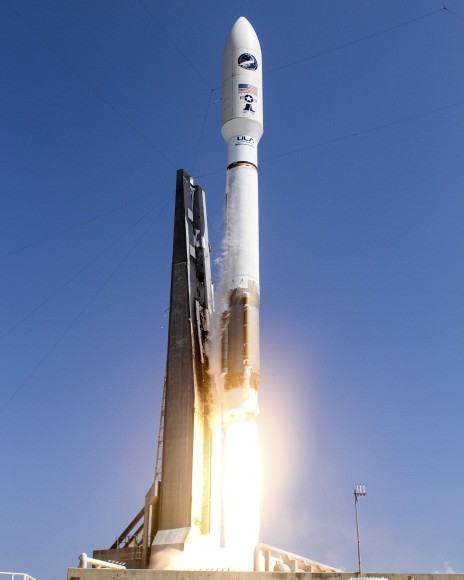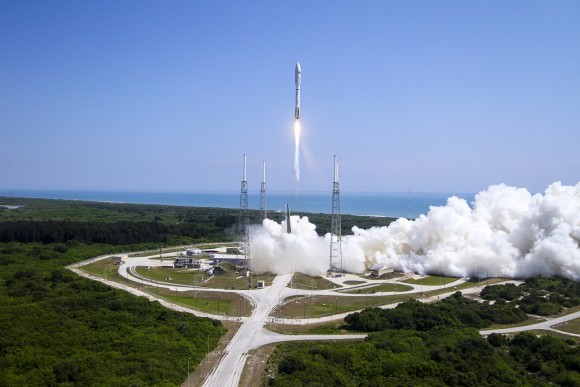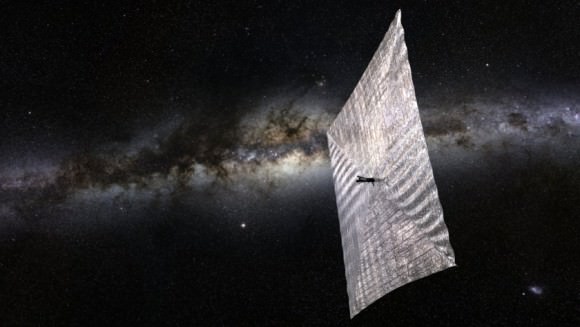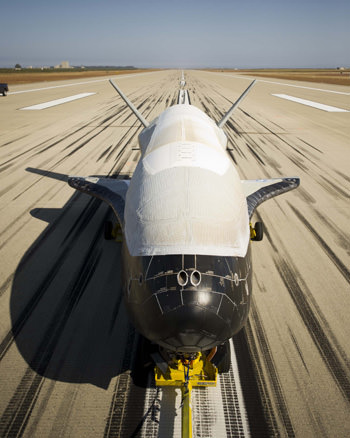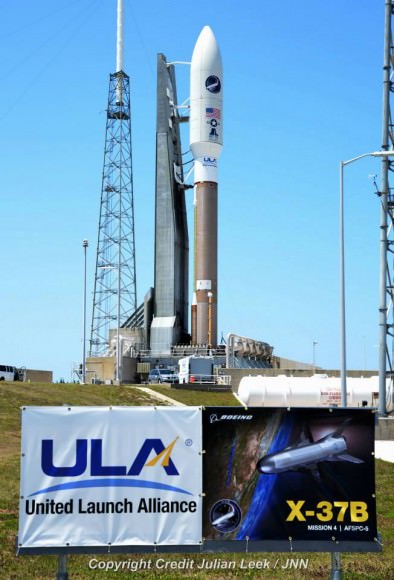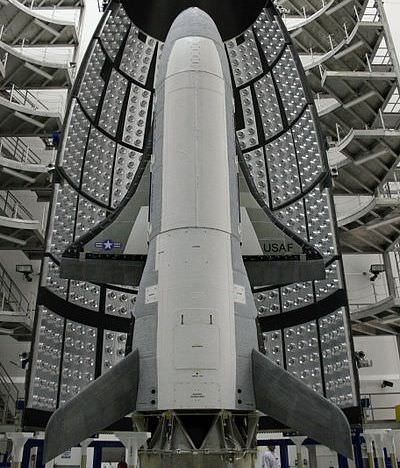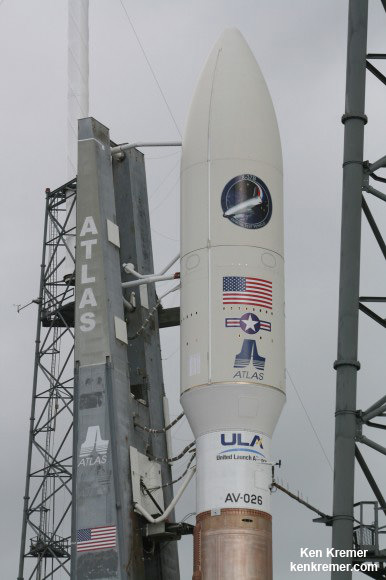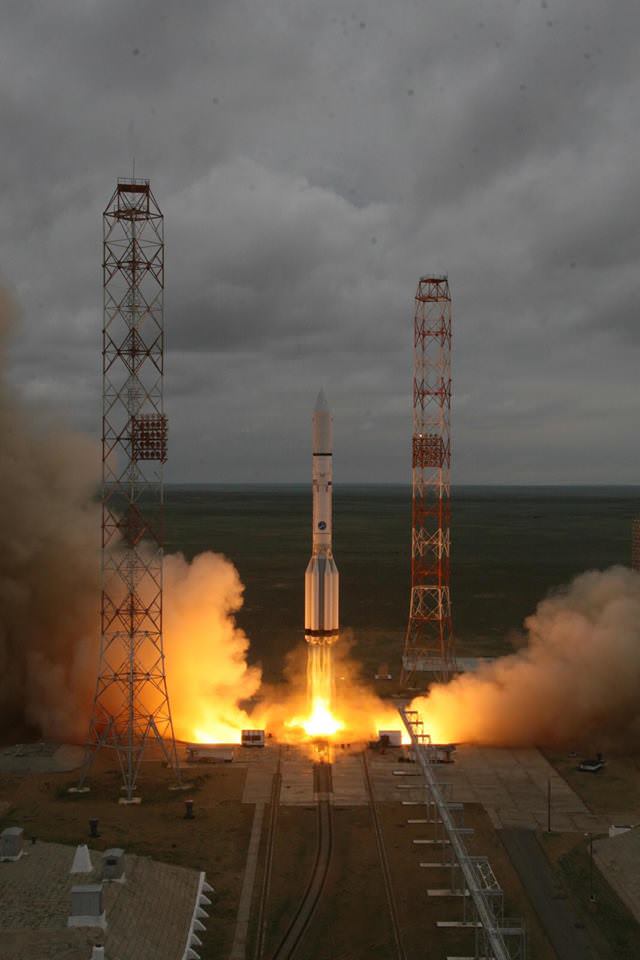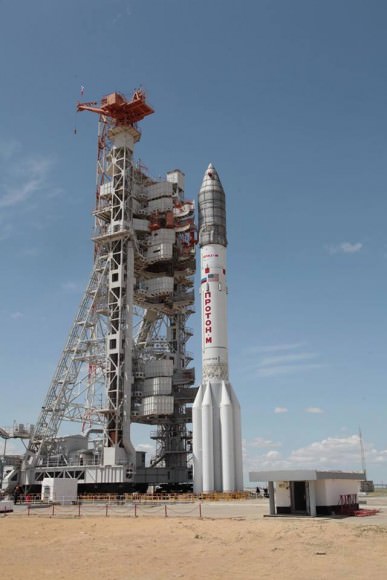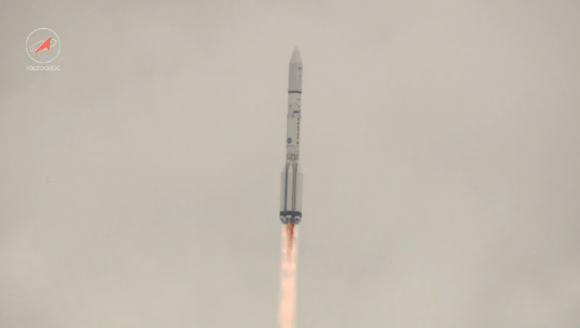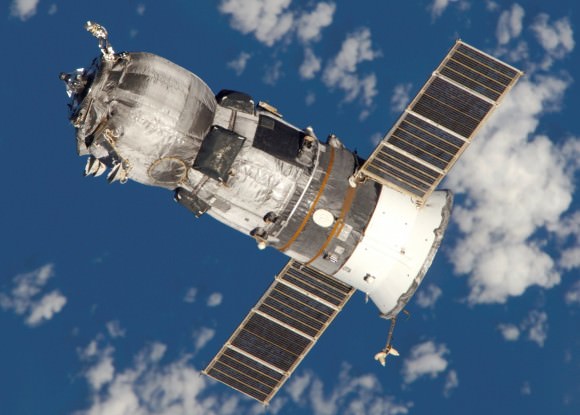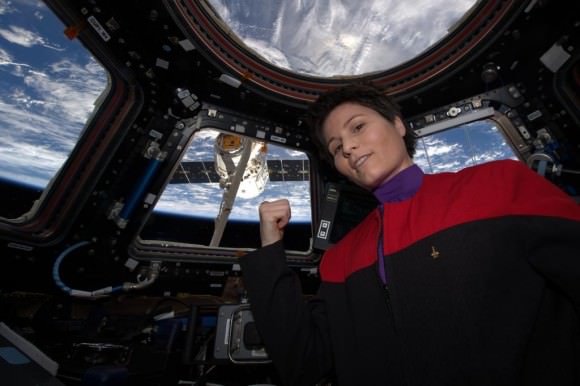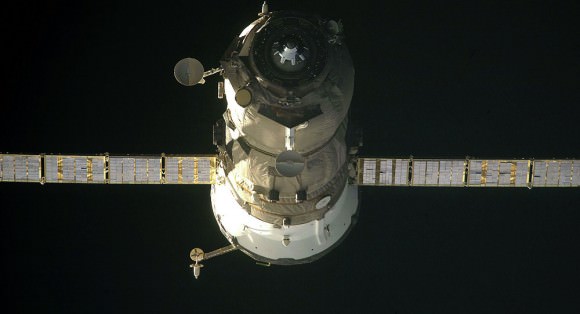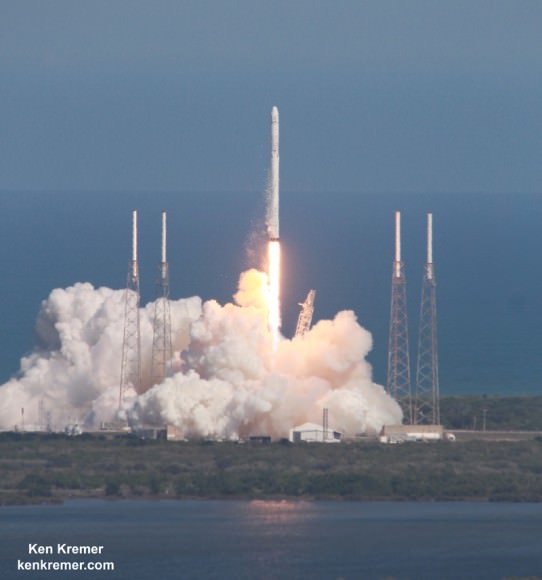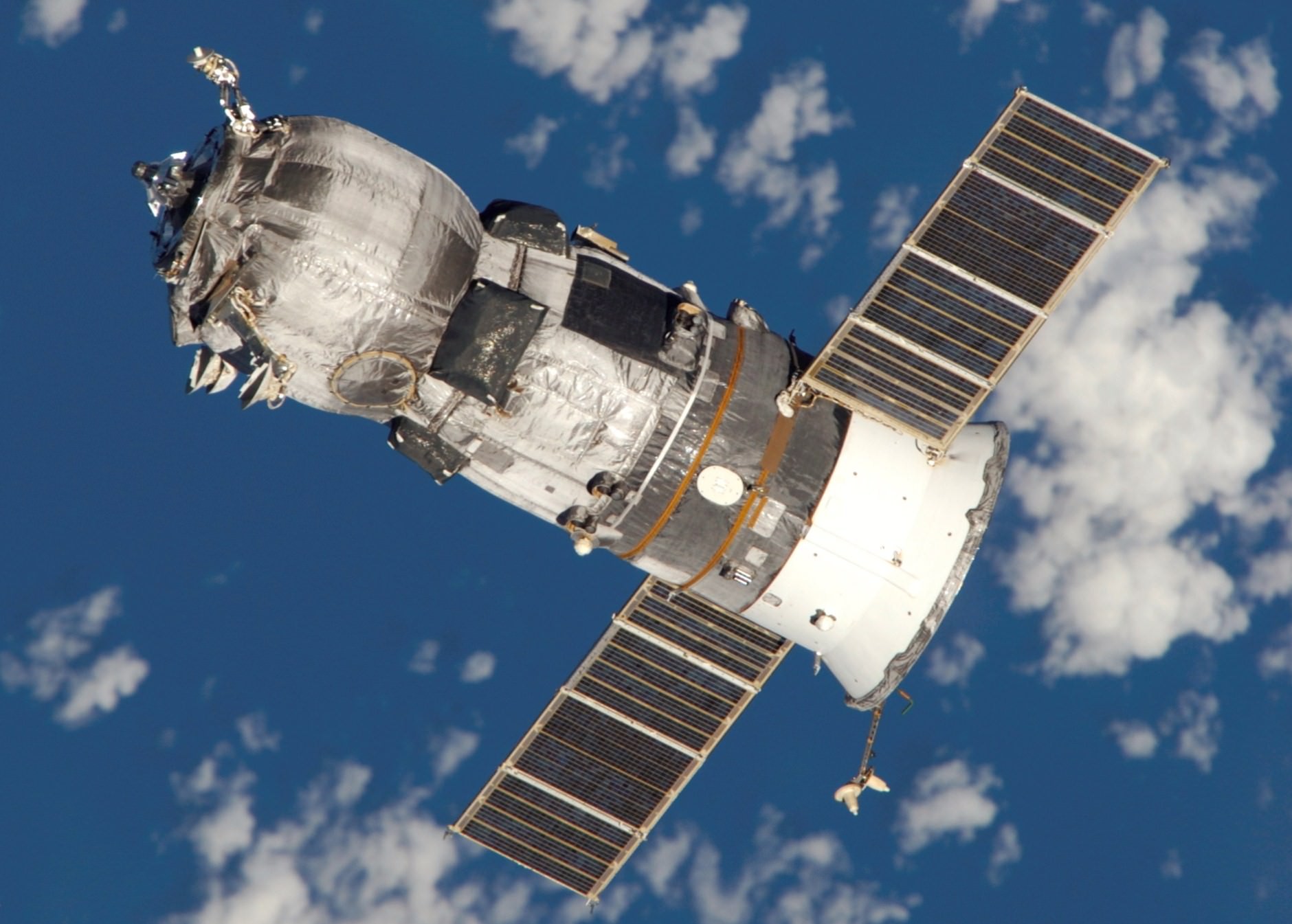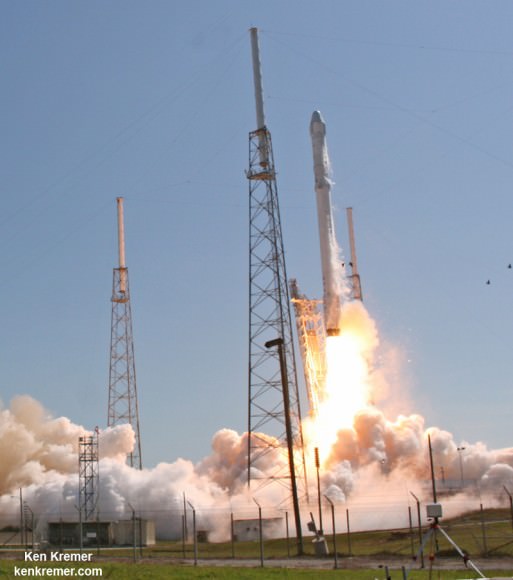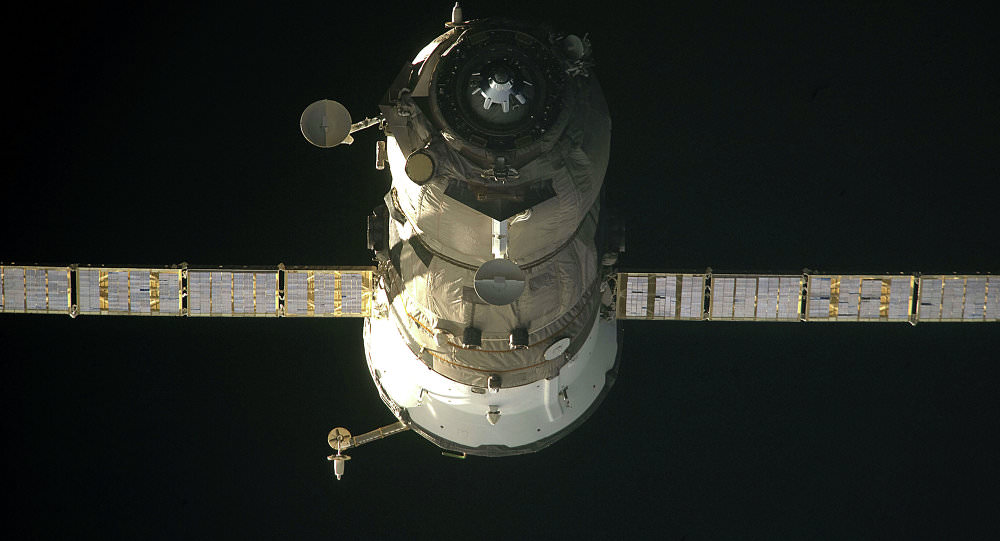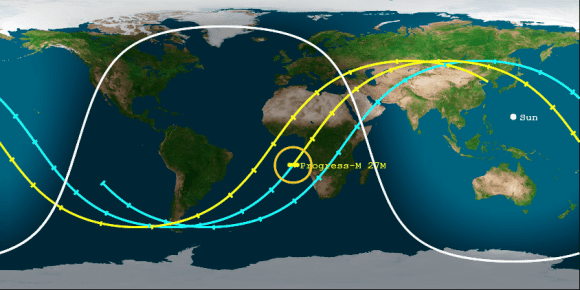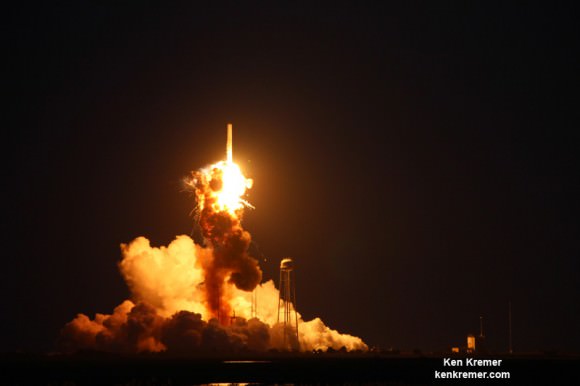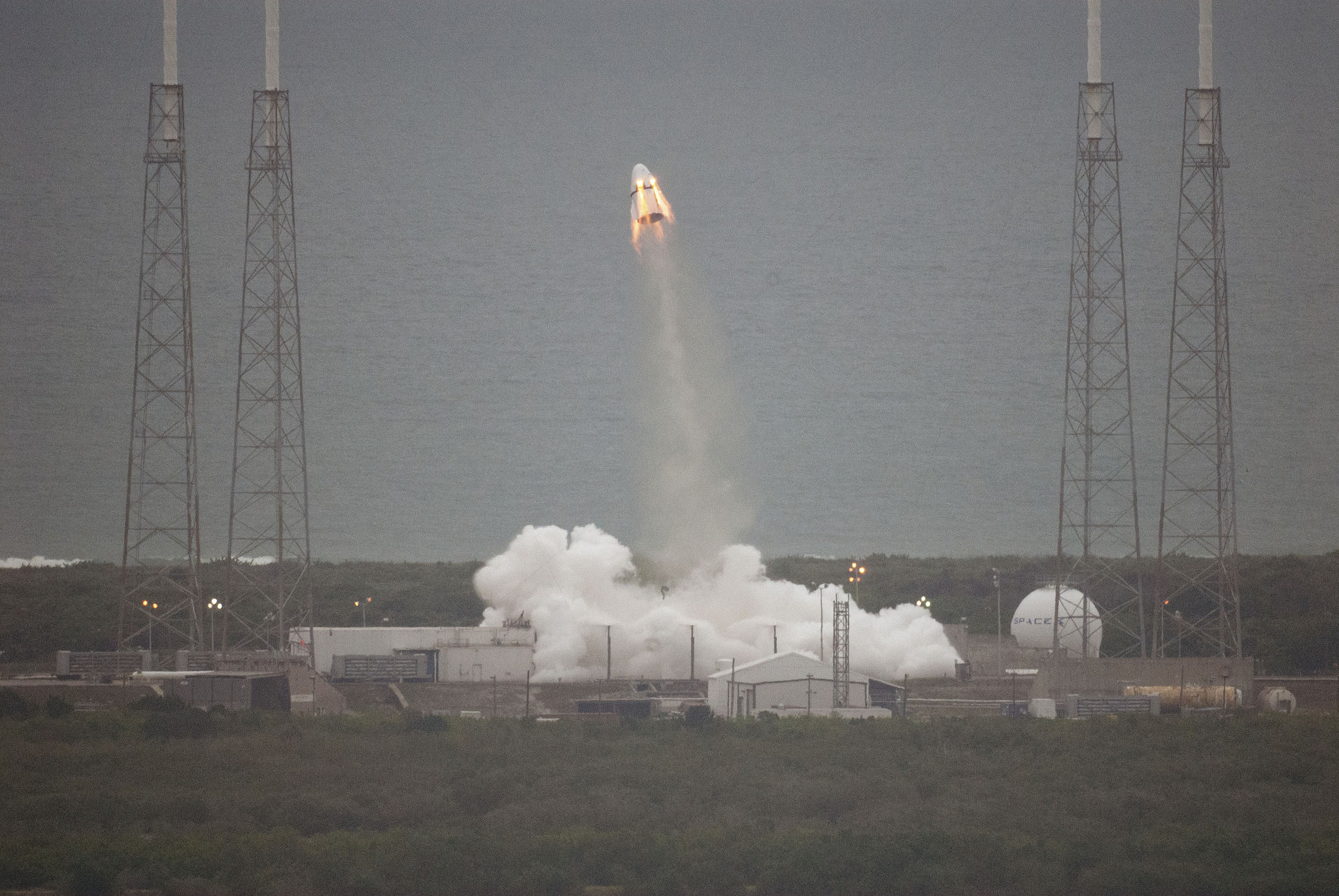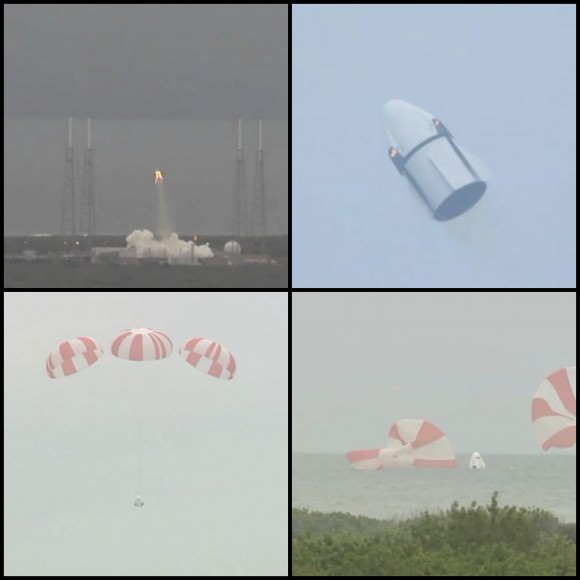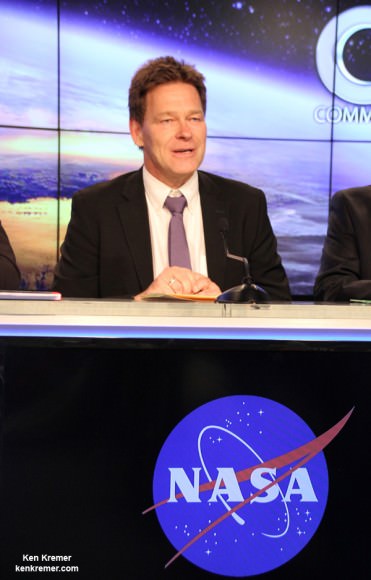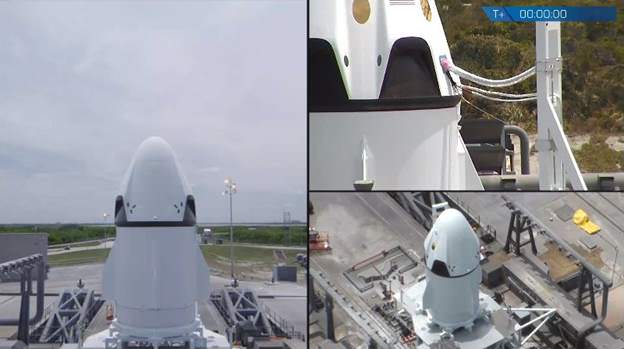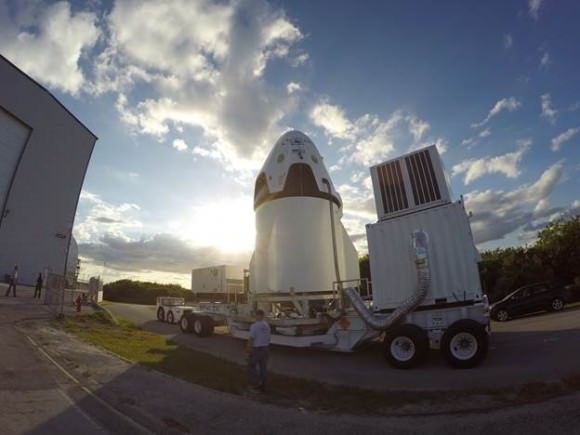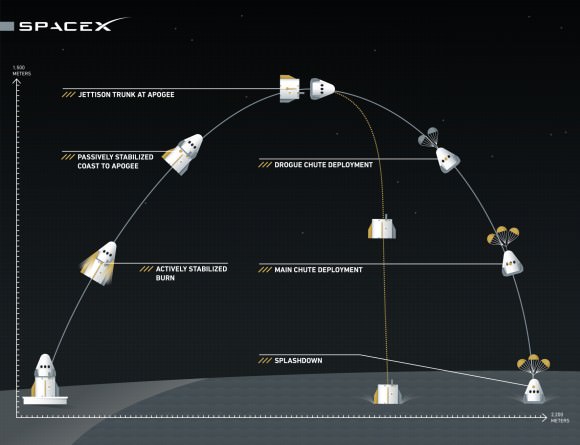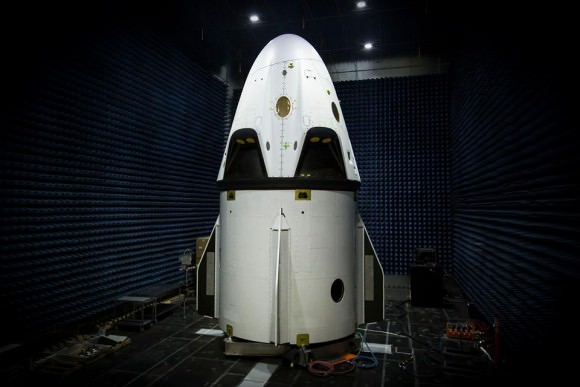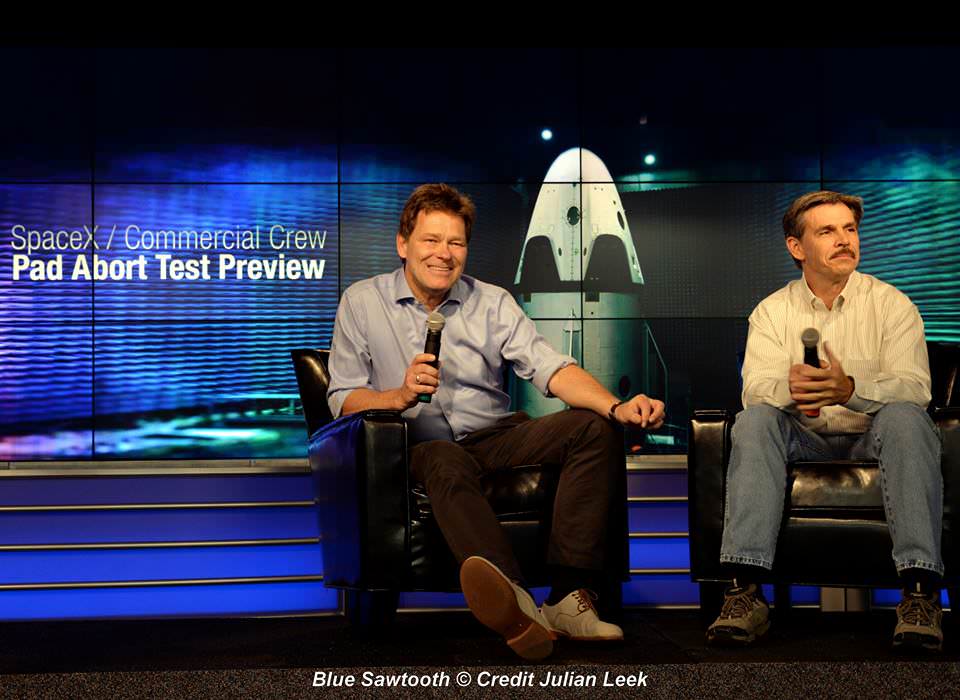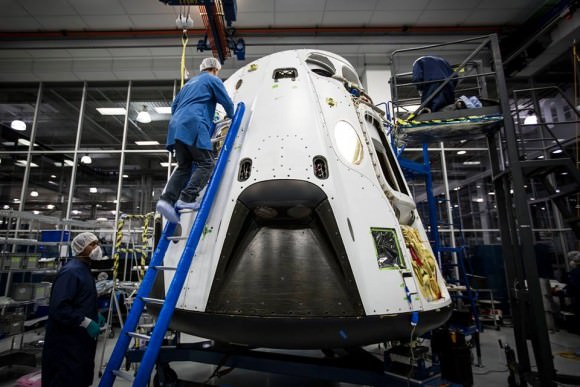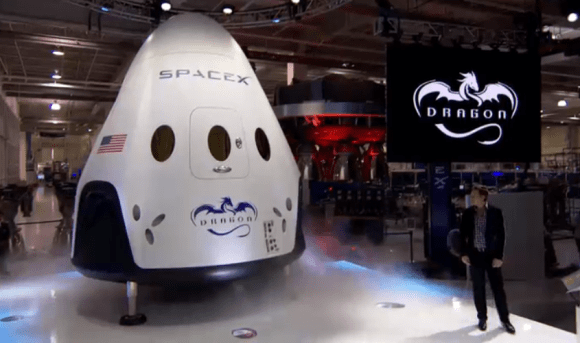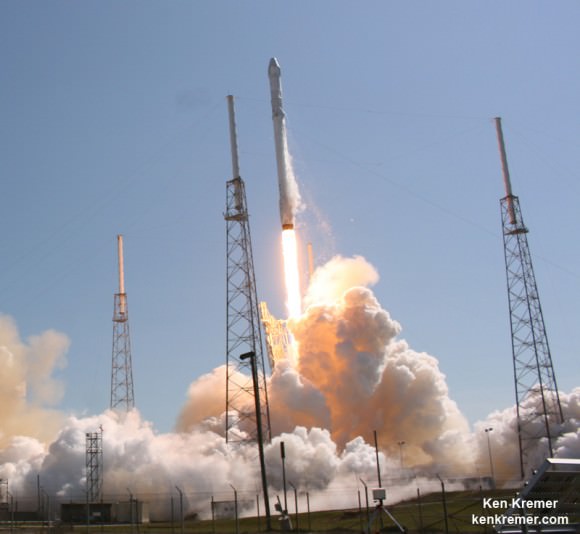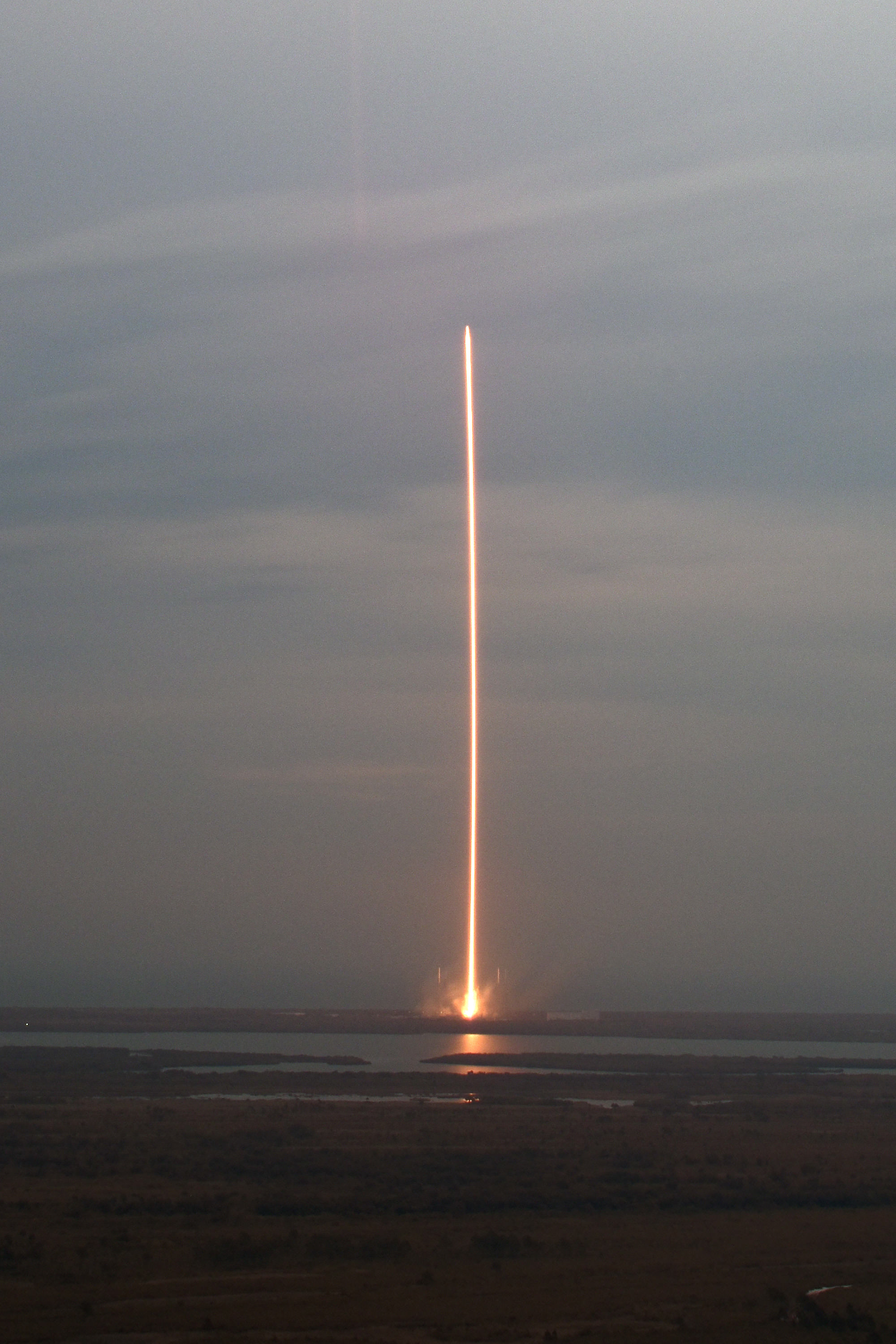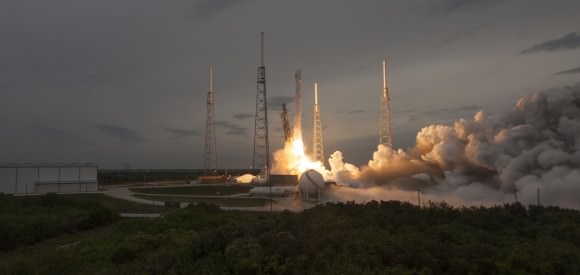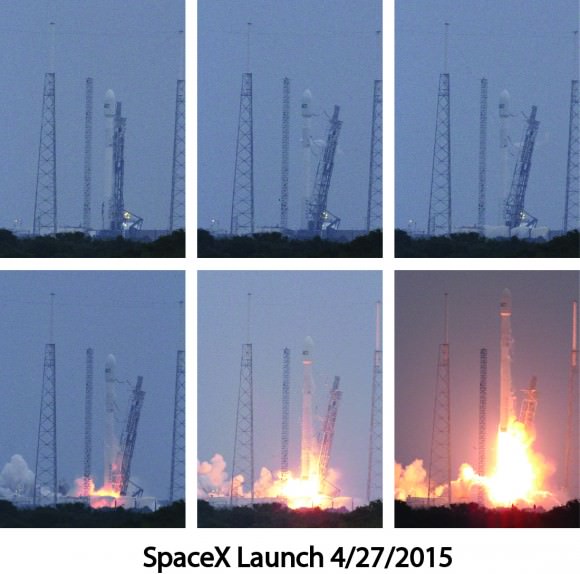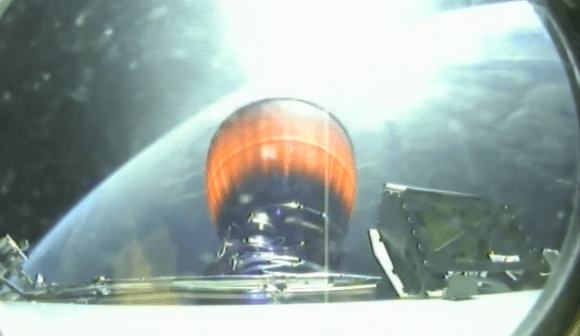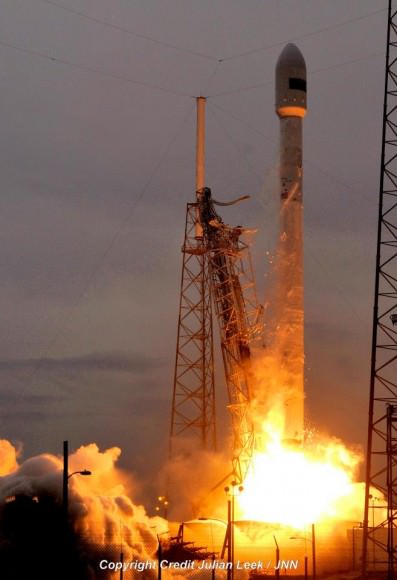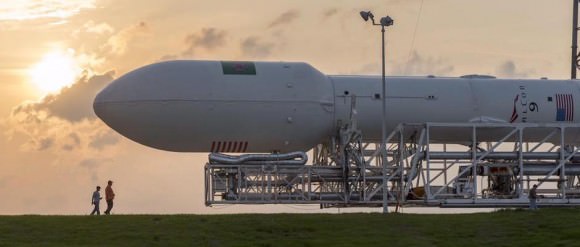Blastoff of the X-37B spaceplane on United Launch Alliance (ULA) Atlas V rocket with the OTV-4 AFSPC-5 satellite for the U.S. Air Force at 11:05 a.m. EDT, May 20, 2015 from Space Launch Complex-41. Credit: Ken Kremer/kenkremer.com
Story updated with additional details and photos[/caption]
The X-37B, a reusable Air Force space plane launched today, May 20, from Cape Canaveral, Florida, on its fourth mission steeped in mystery as to its true goals for the U.S . military and was accompanied by ten tiny cubesat experiments for NASA and the NRO, including a solar sailing demonstration test for The Planetary Society.
The military space plan successfully blasted off for low Earth orbit atop a 20 story United Launch Alliance (ULA) Atlas V rocket on the clandestine Air Force Space Command 5 (AFSPC-5) satellite mission for the U.S. Air Force Rapid Capabilities Office at 11:05 a.m. EDT (1505 GMT) today, May 20, from Space Launch Complex-41 on Cape Canaveral Air Force Station, Florida.
The weather cooperated for a spectacular liftoff from the Florida space coast, which was webcast live by ULA until five minutes after launch when it went into a communications blackout shortly after announcing the successful ignition of the Centaur upper stage.
The exact launch time was classified until it was released by the Department of Defense this morning. Early this morning the four hour launch window was narrowed down to two small windows of opportunity.
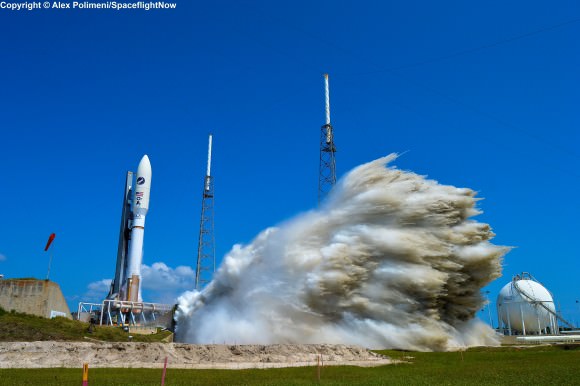
Among the experiments for the flight are 10 CubeSats housed in the Aft Bulkhead Carrier (ABC) located below the Centaur upper stage. Together they are part of the National Reconnaissance Office’s (NRO’s) Ultra Lightweight Technology and Research Auxiliary Satellite (ULTRASat). The 10 CubeSats in ULTRASat are managed by the NRO and NASA. They are contained in eight P-Pods from which they will be deployed in the coming days.
Also aboard the X-37B is a NASA materials science experiment called METIS and an advanced Hall thruster experiment. The Hall thruster is a type of electric propulsion device that produces thrust by ionizing and accelerating a noble gas, usually xenon.
Following primary spacecraft separation the Centaur will change altitude and inclination in order to release the CubeSat spacecraft.
They are sponsored by the National Reconnaissance Office (NRO) and NASA and were developed by the U.S. Naval Academy, the Aerospace Corporation, the Air Force Research Laboratory, California Polytechnic State University, and The Planetary Society.
LightSail marks the first controlled, Earth orbit solar sail flight according to the non-profit Planetary Society. Photons from the sun should push on the solar sails.
“The purpose of this LightSail demonstration test is to verify telemetry, return photos return and to test the deployment of the solar sails,” said Bill Nye, the Science Guy), and President of The Planetary Society, during the X-37B launch webcast.
“LightSail is comprised of three CubeSats that measure about 30 cm by 10 cm.”
“It’s smaller than a shoebox, everybody! And the sail that will come out of it is super shiny mylar. We’re very hopeful that the thing will deploy properly, the sunlight will hit it and we’ll get a push.”
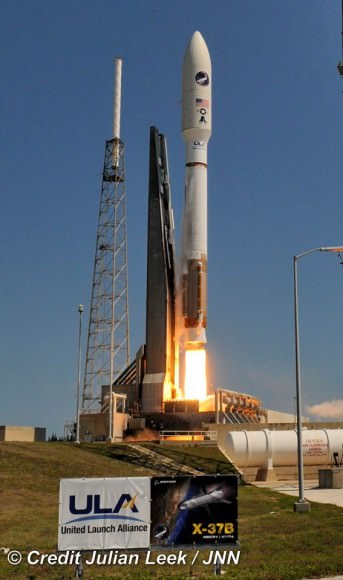
The Boeing-built X-37B is an unmanned reusable mini shuttle, also known as the Orbital Test Vehicle (OTV) and is flying on the OTV-4 mission. It launches vertically like a satellite but lands horizontally like an airplane and functions as a reliable and reusable space test platform for the U.S. Air Force.
“ULA is honored to launch this unique spacecraft for the U.S Air Force. Congratulations to the Air Force and all of our mission partners on today’s successful launch! The seamless integration between the Air Force, Boeing, and the entire mission team culminated in today’s successful launch of the AFSPC-5 mission” said Jim Sponnick, ULA vice president, Atlas and Delta Programs.
The two stage Atlas V stands 206 feet tall and weighs 757,000 pounds.
The X-37B was carried to orbit by the Atlas V in its 501 configuration which includes a 5.4-meter-diameter payload fairing and no solid rocket motors. The Atlas first stage booster for this mission was powered by the RD AMROSS RD-180 engine generating some 850,000 pounds of thrust and fired for approximately the first four and a half minutes of flight. The Centaur upper stage was powered by the Aerojet Rocketdyne RL10C-1 engine.
The X-37B space plane was to separate from the Centaur about 19 minutes after liftoff. The Centaur continued firing separately with the CubeSat deployment, including the Planetary Society’s LightSail test demoonstration, into a different orbit later.
Overall this was ULA’s sixth launch of the 501 configuration the 54th mission to launch on an Atlas V rocket. This was also ULA’s fifth launch in 2015 and the 96th successful launch since the company was formed in December 2006.
The OTV is somewhat like a miniature version of NASA’s space shuttles.
Boeing has built two OTV vehicles. But it is not known which of the two vehicles was launched today.
Altogether the two X-37B vehicles have spent a cumulative total of 1367 days in space during the first three OTV missions and successfully checked out the vehicles reusable flight, reentry and landing technologies.
The 11,000 pound (4990 kg) state-of -the art reusable OTV space plane was built by Boeing and is about a quarter the size of a NASA space shuttle. It was originally developed by NASA but was transferred to the Defense Advanced Research Projects Agency (DARPA) in 2004.
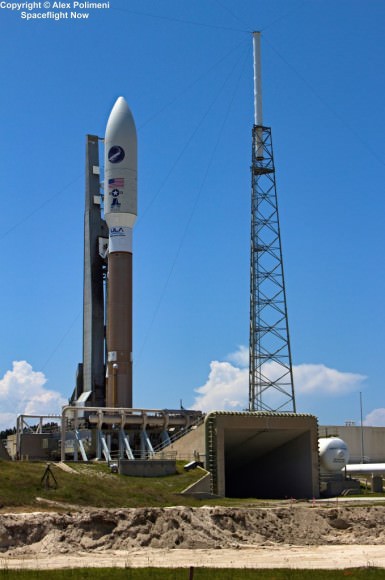
All three OTV missions to date have launched from Cape Canaveral, Florida and landed at Vandenberg Air Force Base, California. Future missions could potentially land at the shuttle landing facility at the Kennedy Space Center, Florida.
The first OTV mission launched on April 22, 2010, and concluded on Dec. 3, 2010, after 224 days in orbit.
The following flights were progressively longer in duration. The second OTV mission began March 5, 2011, and concluded on June 16, 2012, after 468 days on orbit. The third OTV mission launched on Dec. 11, 2012 and landed on Oct. 17, 2014 after 674 days in orbit.
The vehicle measures 29 ft 3 in (8.9 m) in length with a wingspan of 14 ft 11 in (4.5 m). The payload bay measures 7 ft × 4 ft (2.1 m × 1.2 m). The space plane is powered by Gallium Arsenide Solar Cells with Lithium-Ion batteries.
Among the primary mission goals of the first three flights were check outs of the vehicles capabilities and reentry systems and testing the ability to send experiments to space and return them safely. OTV-4 will shift somewhat more to conducting research.
“We are excited about our fourth X-37B mission,” Randy Walden, director of the USAF’s Rapid Capabilities Office, said in a statement. “With the demonstrated success of the first three missions, we’re able to shift our focus from initial checkouts of the vehicle to testing of experimental payloads.”
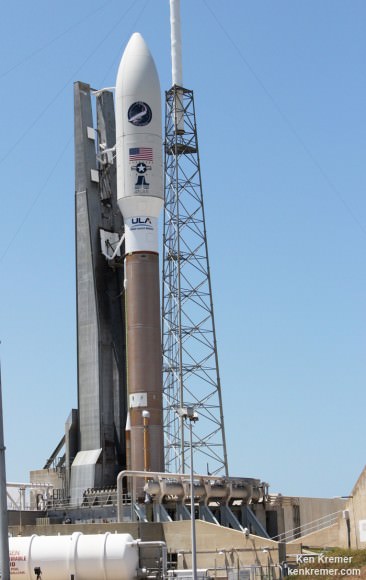
Stay tuned here for Ken’s continuing Earth and Planetary science and human spaceflight news.
